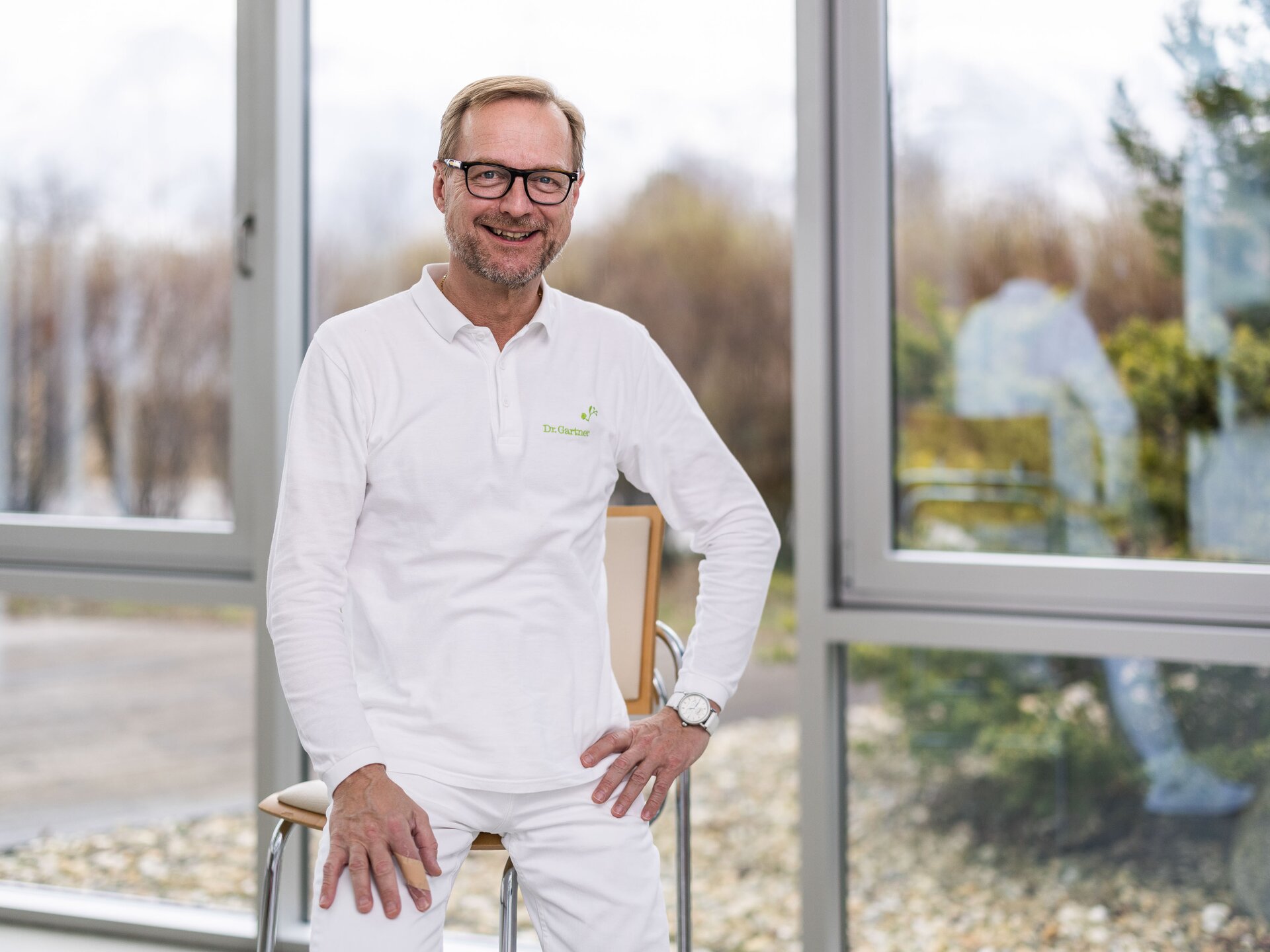Focus health
Whether it’s a patient’s first or tenth Mayr treatment programme, there are certain questions that crop up repeatedly. Dr Peter Gartner has summarised his answers to the most frequently asked questions.
The term toxin is used to describe a substance that needs to be excreted, but can’t be because the body’s waste disposal system is temporarily overloaded. The most common toxins include lactate, amino acids and advanced glycation end products (AGEs). These tend to be acidic, water-soluble substances that are briefly deposited in the connective and fatty tissues. This increases tissue pressure, which compromises the tiny blood and lymphatic vessels, and is often the start of chronic disease.
You start by drinking large quantities of water to release toxins from the tissues and fat deposits. As these pollutants briefly circulate in the blood, patients can temporarily experience headaches or dizziness. The toxins are subsequently eliminated via the kidneys (urine) and liver (bile).
During treatment, we recommend around one litre per 20kg of body weight daily. In other words, if you weigh up to 50kg drink at least two litres, over 50kg at least three litres, and over 90kg at least four litres a day; preferably spring water, mineral water with little or no carbon dioxide, or herbal tea.
It encourages detoxification via the liver, gallbladder and intestines; first by stimulating the flow of bile from the liver, and then by ensuring that, thanks to bitter water’s mildly laxative effect, the bile fluid containing the toxins is rapidly excreted.
Definitely not! It’s still the most effective method for increasing blood flow to the liver and thereby detoxifying it: we can even verify its effect with ultrasound! Plus it’s so easy: all you need are three towels – two small and one large – and a hot water bottle. It’s extremely pleasant and a great way to support your treatment programme.
We need to distinguish between treatments and dietary recommendations. Scientists no longer recommend drinking milk for daily nutrition. However, cow’s milk and dairy products can still be used during a Mayr therapy. If you are allergic or intolerant to dairy, we have a number of alternatives including soya, sheep’s and goat’s milk.
This form of hydrotherapy, made popular by the priest Sebastian Kneipp, is highly beneficial, so Modern Mayr includes it as a supplementary treatment. Based on the principles of stimulation therapy, the useful effects are achieved by means of water-based applications such as treading water, arm or contrast arm baths and hip baths. Kneipp treatments are anti-inflammatory, improve blood circulation and stimulate blood flow.
Yes, absolutely. The development of Modern Mayr cuisine, which adds protein to the traditional Mayr diet, has made exercising on a programme entirely viable, and it prevents muscle loss. Unlike the low protein diets of the past, when guests were discouraged from taking more than a gentle walk, vigorous exercise therapy is now encouraged during a Mayr therapy.
Absolutely not! This is a special feeling of elation caused by beta-endorphin, a substance similar to morphine which is produced by the body in extreme situations. For some people, a Mayr programme is sufficiently taxing to result in the release of beta-endorphin, which leads to euphoria. However, this effect of Mayr therapy is quite rare.
At the end of your programme, you should have reached a diet level that can be maintained at home for a while. The idea is that you incorporate the eating behaviour learned during a Mayr stay into your daily life. Ideally, you would have a Mayr therapy every six months, but most people find an annual fasting programme lasting two or three weeks more realistic.
Tipp für die Zeit nach einer Mayr-Kur
The transition to ordinary food should not be too quick, but neither should it be too slow. Depending on the advice of your Mayr physician, the move will take between one and two weeks. A detox offers an ideal opportunity for changing your eating habits, i.e. for reducing the amount you eat and choosing lighter foods than those you enjoyed prior to a Mayr therapy programme.







